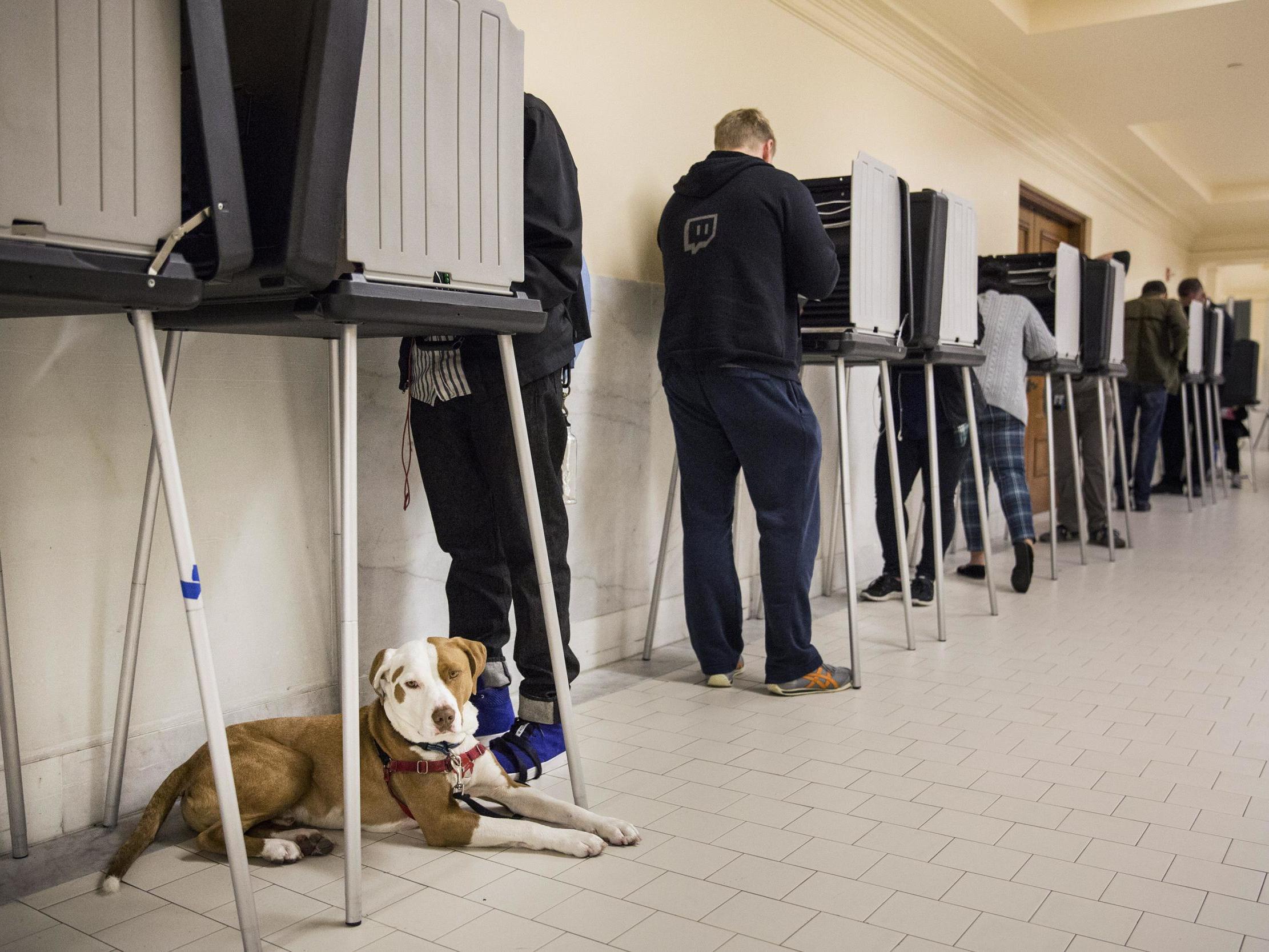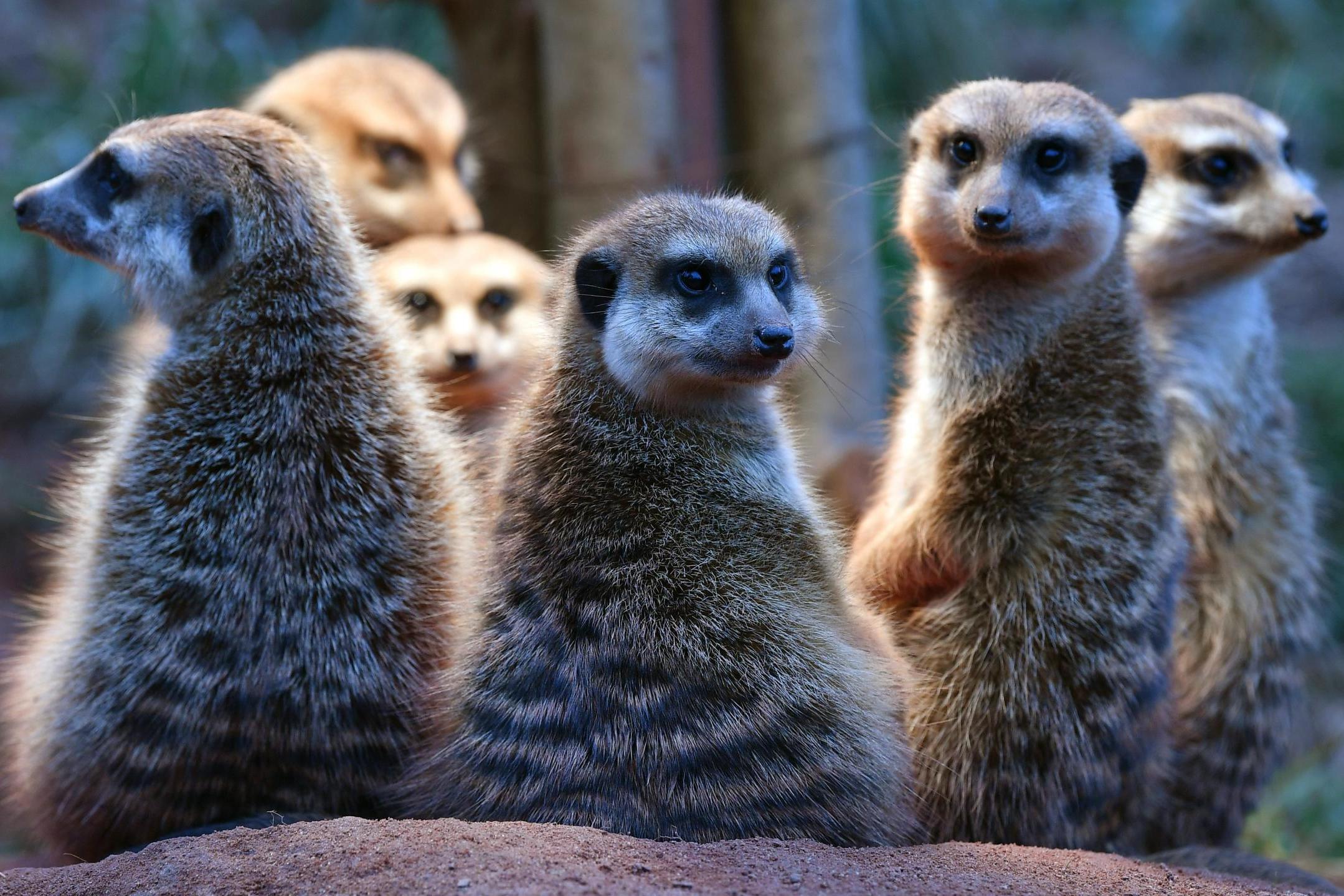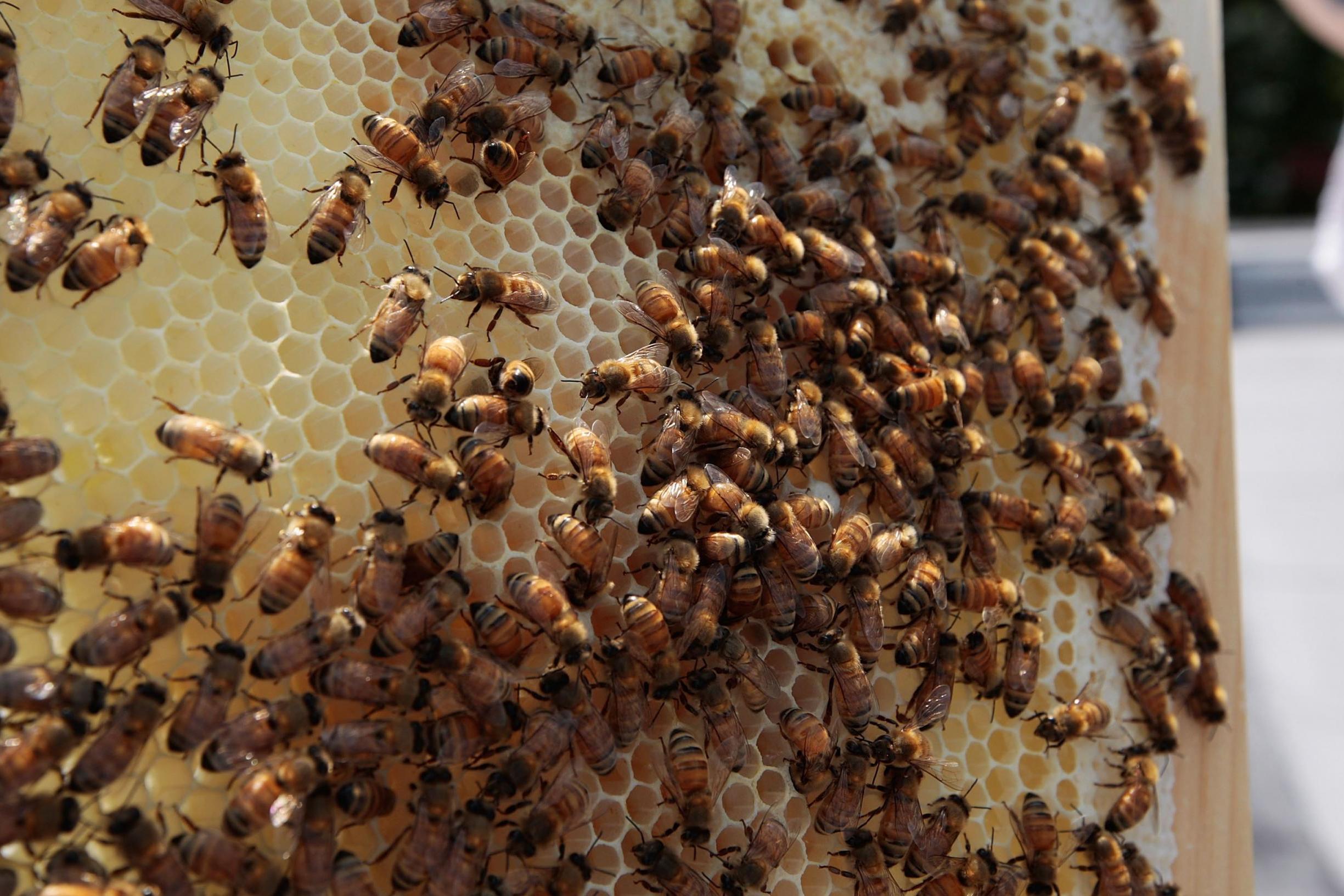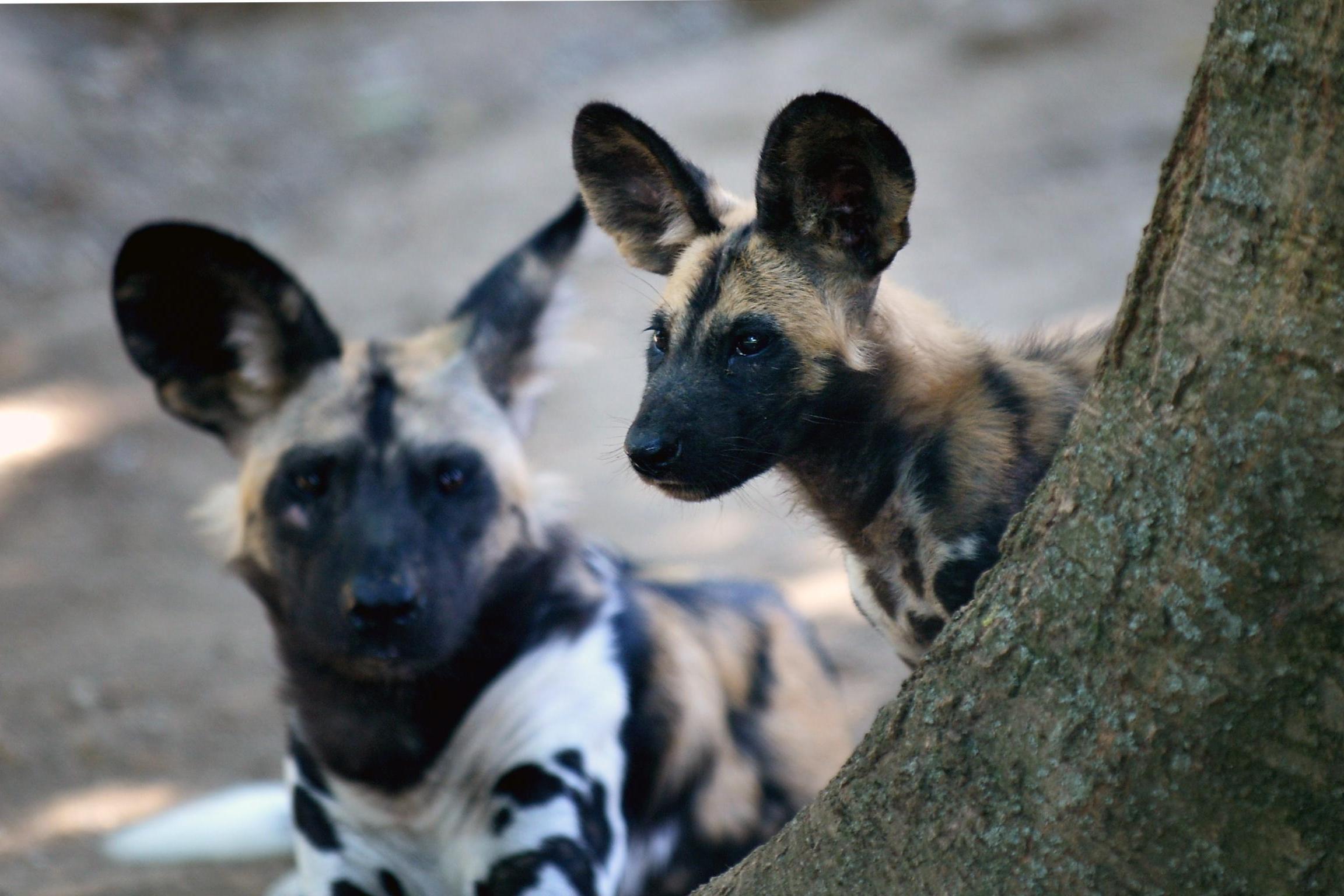The Independent's journalism is supported by our readers. When you purchase through links on our site, we may earn commission.
Call of the wild: How the animal kingdom votes
From wild dogs to honeybees, Elizabeth Preston uncovers the evidence behind group choice among various species of animals

Your support helps us to tell the story
From reproductive rights to climate change to Big Tech, The Independent is on the ground when the story is developing. Whether it's investigating the financials of Elon Musk's pro-Trump PAC or producing our latest documentary, 'The A Word', which shines a light on the American women fighting for reproductive rights, we know how important it is to parse out the facts from the messaging.
At such a critical moment in US history, we need reporters on the ground. Your donation allows us to keep sending journalists to speak to both sides of the story.
The Independent is trusted by Americans across the entire political spectrum. And unlike many other quality news outlets, we choose not to lock Americans out of our reporting and analysis with paywalls. We believe quality journalism should be available to everyone, paid for by those who can afford it.
Your support makes all the difference.Are humans the only animals that vote? As the early 2020 presidential election season suggests, there are probably more natural and efficient ways to make a group choice. But we’re certainly not the only animals on Earth that vote. We’re not even the only primates that primary.
Any animal living in a group needs to make decisions as a group, too. Even when they don’t agree with their companions, animals rely on one another for protection or help finding food. So they have to find ways to reach consensus about what the group should do next, or where it should live. While they may not conduct continent-spanning electoral contests like Super Tuesday, species ranging from primates all the way to insects have methods for finding agreement that are surprisingly democratic.
Meerkats
As meerkats start each day, they emerge from their burrows into the sunlight, then begin searching for food. Each meerkat forages for itself, digging in the dirt for bugs and other morsels, but they travel in loose groups, each animal up to about 30ft from its neighbours, says Marta Manser, an animal behaviour scientist at the University of Zurich in Switzerland. Nonetheless, the meerkats move as one unit, drifting across the desert while they search and munch.
The meerkats call to one another as they travel. One of their sounds is a gentle mew that researchers refer to as a “move call”. It seems to mean, “I’m about ready to move on from this dirt patch. Who’s with me?”
In a 2010 study, Manser and her colleagues studied move calls in a dozen meerkat groups living in the Kalahari Desert in South Africa. Groups ranged from six to 19 individuals. But the scientists found that only about three group members had to mew before the whole party decided to move along. The group didn’t change direction, but it would double its speed to reach better foraging grounds.

Biologists call this phenomenon – when animals change their behaviour in response to a critical mass of their peers doing something – a quorum response. Manser thinks quorum responses show up in human decision making too.
“If you’re in a group and somebody says, ‘Let’s go for a pizza’, and nobody joins in, nothing is going to happen,” she says. But if the person craving pizza is joined by a couple of friends, their argument becomes much more convincing.
In another set of experiments, Manser and a co-author found that it didn’t matter whether meerkats making move calls were dominant or subordinate within the group. Rather, she says, “it depends on how determined an individual appears”.
She thinks this also has a human parallel. “Even if you don’t have the rank,” she says, as long as you pretend you know what you’re doing, “the group will follow”.
Honeybees
In the spring, you may discover a swarm of bees dangling from a tree branch like a dangerous bunch of grapes. These insects are in the middle of a tough real estate decision.
When a honeybee colony splits in two, a queen and several thousand workers fly away from a hive together. The swarm finds someplace to pause for hours or days while a few hundred scouts fan out to search for a new home. When a scout finds a promising hole or hollow, she inspects it thoroughly. Then she flies back to the swarm, still buzzing on its tree branch. Walking on the swarm’s surface, she does a waggling, repetitive dance that tells the other bees about the site she found – its quality, direction and how far away it is.

More scouts return to the swarm and do their own dances. Gradually, some of the scouts become persuaded by others, and switch their choreography to match. Once every scout agrees, the swarm flies off to its new home. In his 2010 book Honeybee Democracy, Thomas D Seeley, a Cornell University biologist, writes that we can learn a lesson from the bees: “Even in a group composed of friendly individuals with common interests, conflict can be a useful element in a decision making process.”
African Wild Dogs
Like pet dogs, African wild dogs spend some of their time enthusiastically socialising and some of it lazing around. Members of a pack jump up and greet one another in high-energy rituals called rallies. After a rally, the dogs may move off together to start a hunt – or they may go back to resting. In a 2017 study, researchers discovered that the decision to hunt or stay seems to be democratic. To cast a vote for hunting, the dogs sneeze.

The more sneezes there were during a rally, the more likely the dogs were to begin hunting afterward. If a dominant dog had gotten the rally started, the pack was easier to persuade – just three sneezes might do the trick. But if a subordinate dog started the rally, it took a minimum of 10 sneezes to prompt a hunt.
The researchers note that dogs might actually cast their votes via some other, hidden signal. The sneezes could help the animals clear out their noses and get ready to sniff for prey. Either way, the wild dogs end their achoo-ing with a decision they all agree on.
Baboons
Primates, our closest relatives, have provided lots of material for researchers studying how groups make decisions. Scientists have seen gibbons following female leaders, mountain gorillas grunting when they’re ready to move and capuchins trilling to one another.
Sometimes the process is more subtle. A group may move across the landscape as a unit without any obvious signals from individuals about where they’d like to go next. To figure out how wild olive baboons manage this, the authors of a 2015 paper put GPS collars on 25 members of one troop in Kenya. They monitored the monkeys’ every step for two weeks. Then they studied the movements of each individual baboon in numerous combinations to see who was pulling the group in new directions.

The data showed that any baboon might start moving away from the others as if to draw them on a new course – male or female, dominant or subordinate. When multiple baboons moved in the same direction, others were even more likely to come along. When there was disagreement, with trailblazing baboons moving in totally different directions, others would eventually follow the majority. But if two would-be leaders were tugging in directions less than 90 degrees apart, followers would compromise on a middle path. No matter what, the whole group ended up together.
Ariana Strandburg-Peshkin, an animal behaviour researcher at the University of Konstanz in Germany who led the baboon study, points out that unlike in human groups, among baboons no one authority tallies up votes and announces the result. The outcome emerges naturally. But the same kind of subtle consensus-building can be part of our voting process, too.
“For instance, we might influence one another’s decisions on who to vote for in the lead-up to an election, before any ballots are cast,” she says.
Rock Ants
Like honeybees, ants often face important decisions about relocating their colonies. Rock ants, which live in stony crevices throughout Europe, use a caucus-like method to choose a new home.
Some scouts seem to be always on the lookout for better homes, writes Nigel Franks, an emeritus professor at the University of Bristol. These scouts investigate the quality of potential new nest sites. If enough scouts find themselves at the same site, they’ll reach the minimum number needed to relocate the colony. They can also try to build such a quorum by going back to the original nest and recruiting other ants to follow them to the new site. They lead these ants one at a time, a follower tapping a leader with her antennae to stay on course.
Either way, once a critical number of ants have gathered at one new site, the colony’s decision is official. The ants aren’t quite patient enough to let the electoral process take its course, though. They bring over the rest of the colony by simply picking up their sisters and hauling them to their new home.
© The New York Times
Join our commenting forum
Join thought-provoking conversations, follow other Independent readers and see their replies
Comments